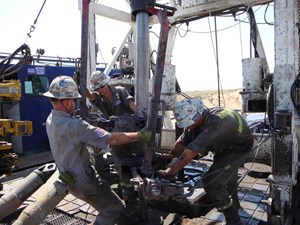Shale’s post-crash recovery battles rising costs, loss of suppliers
HOUSTON (Bloomberg) --Explorers in the U.S. shale patch are starting to see signs of higher costs as drilling begins to ramp up after last year’s historic crude crash, according to the latest poll conducted by the Federal Reserve Bank of Dallas.
The oil price needed to profitably drill a new well is $52 a barrel, executives from almost 100 producers said in the bank’s latest quarterly survey. That’s an increase of 6%, compared with when the question was asked last year. To cover costs on existing wells, companies need $31, which is 3% more than last year. West Texas Intermediate crude futures traded at about $60 on Wednesday.
Though explorers have vowed restraint amid pressure to return cash to shareholders, shale basins are rumbling back to life as oil prices rebound after last year’s pandemic-driven collapse in demand. The activity boost comes as oilfield service giants Schlumberger, Baker Hughes Co. and Halliburton Co. are pivoting toward greater growth abroad, leaving fewer contractors to drill and complete U.S. wells.
“The loss of suppliers and other services this past year will cause problems in being able to get work accomplished in a timely manner,” an unidentified survey respondent was quoted as saying in the report published Wednesday.
More than three quarters of oilfield service executives surveyed said they expect pricing for their work to increase this year. While drilling-rig use has been steadily recovering over the past few months, it remains at roughly half the level seen at the start of last year.
After seven straight quarters of negative readings that indicated cuts to headcount, the Dallas Fed’s employment index turned positive in the first three months of the year, driven primarily by oilfield service firms, according to the report.



